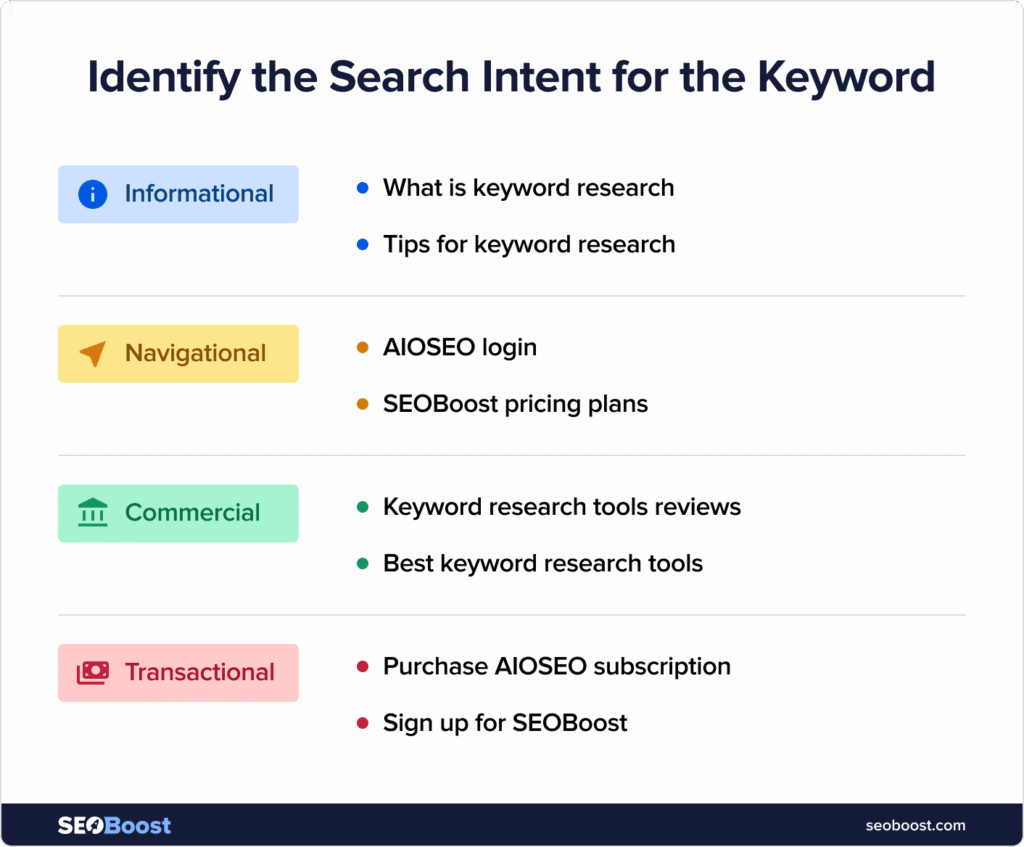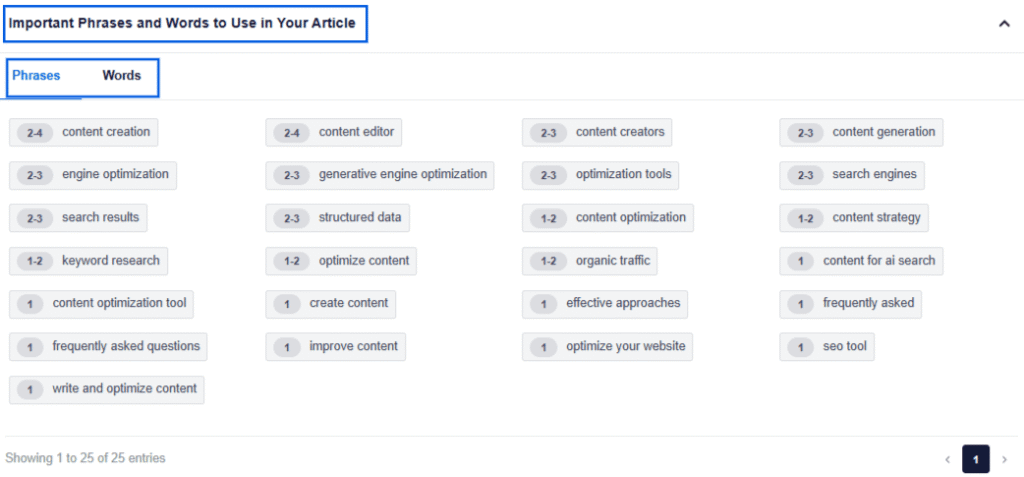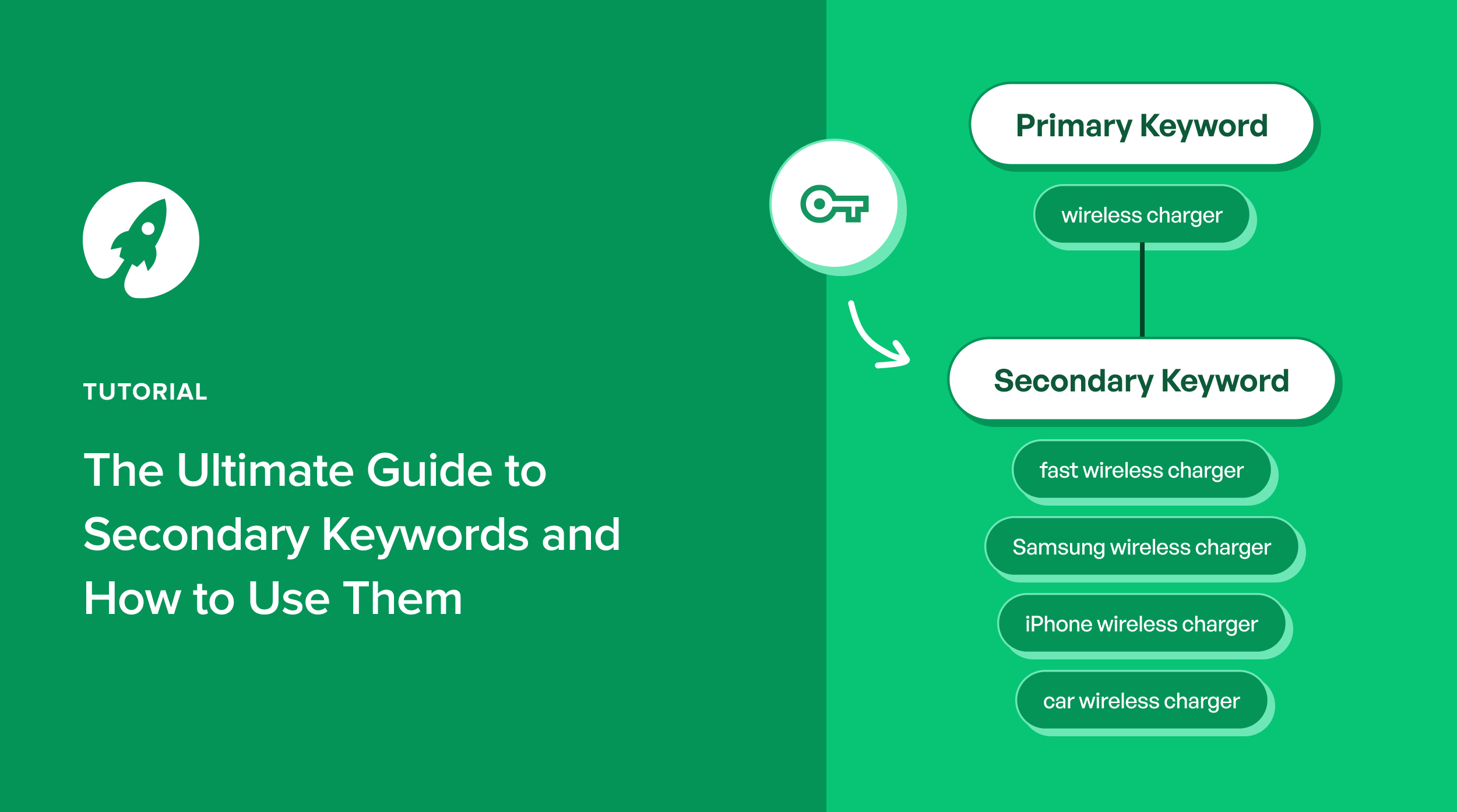If you’re only optimizing for primary keywords, you’re leaving serious traffic on the table. SEO is just as much about context, and secondary keywords provide signal depth, intent, and topical authority.
From boosting your search visibility to enhancing content comprehensiveness, learning how to use secondary keywords strategically can make the difference between ranking on page 2 and achieving position 1.
As a content strategist who’s worked with hundreds of blog posts (and ranked a fair share of them), I can tell you firsthand: some of the most underrated SEO wins often come from secondary keywords and not just the headliners.
So, in this guide, I’ll discuss what secondary keywords are and how to use them.
Let’s start with a definition.
What Are Secondary Keywords?
While your primary keyword is the main focus or the core term your blog is targeting, secondary keywords are the closely related variations, synonyms, or supporting terms that give your content structure and context.
Think of secondary keywords as the backbone of your SEO.
For instance, if your focus keyword is content marketing, the secondary keywords would be content marketing strategy and content marketing tools.

These keywords:
- Don’t compete with your primary keyword
- Expand your reach into related queries
- Strengthen the content’s topical relevance
Google’s algorithm now understands semantic relationships. So, including semantically linked secondary keywords helps your content rank for a broader range of queries, without keyword stuffing.
How Secondary Keywords Improve SEO
Using secondary keywords isn’t just an SEO “nice-to-have.”
With AI Overviews reshaping trend searches, it’s essential for content that ranks and converts.
Here’s how secondary keywords move the needle:
Support Content Relevance
Search engines now prioritize content that fully answers user intent. Secondary keywords help you cover more angles of a topic, making your content more comprehensive and contextually relevant.
If your blog is about “content marketing strategies,” including terms like “content calendar,” “SEO content,” and “B2B content creation” helps signal that you’re covering the topic thoroughly.
Improve User Experience
Readers want clarity, depth, and answers. Secondary keywords naturally guide you to expand on subtopics your audience is already thinking about.
For instance, if someone searches “how to start a blog,” they’re likely also curious about “blog platforms,” “SEO for blogs,” and “monetization tips.”
And so, including these keywords can help capture their interest and often help reduce bounce rate because readers find what they’re looking for — all in one place.
Enhance Topical Relevance
Google’s algorithms, especially with AI Overviews, have evolved.
It now assesses topical authority.
This means covering a broader semantic field through secondary keywords can boost your page’s chances of being recognized as a reliable source.
This is where you can also use topic research tools like SEOBoost’s Topic Reports to identify related phrases and terms.
Doing so aids in building SEO content silos, which are interlinked posts around similar topics, benefiting both UX and SEO.
Why You Can’t Rely on Primary Keywords Alone
If you’re laser-focused only on your primary keyword, you’re unintentionally limiting your content’s reach, context, and ranking potential.
That approach is outdated, and here’s why:
Primary Keywords Are Highly Competitive
Let’s face it: the most obvious keywords are usually the most saturated.
Everyone is trying to rank for “email marketing” or “project management software.” That makes it harder to break into the top search results.
Secondary keywords help you compete more intelligently by targeting lower-difficulty, longer-tail phrases that still bring in meaningful traffic.
For instance, instead of competing head-on for “email marketing,” you might target “email marketing automation for small businesses.”
This improves your content production prochess, as well as helps you reach more niche audiences.
They Don’t Fully Capture Search Intent
Search intent is rarely one-dimensional. A single query can imply multiple needs.

If your content only hits one angle, it risks falling short.
On the other hand, secondary keywords let you expand your scope, from educational queries to commercial ones, without veering off-topic.
A blog on “AI writing tools” that also covers “content quality,” “SEO optimization,” and “automated outlines” is more helpful and more likely to rank because it covers different aspects of the search intent, adding content depth to it.
Limit Ranking Potential
Relying on one primary keyword means you’re optimizing for one search path.
But Google rewards holistic, semantically-rich content.
Including a smart mix of secondary keywords helps you rank for hundreds of related terms.
You’ll also boost your chances of getting featured in People Also Ask boxes, long-tail SERPs, and even voice search.
Keyword Research Tools I Use to Find Secondary Keywords
Now that you understand the importance of using related keywords, I’m going to share the keyword research tools I use in my daily workflow.
1. SEOBoost’s Topic Reports
Why it’s great: You get a mix of high-traffic and low-competition phrases, grouped by relevance. Plus, it integrates directly into your content briefs.
If you’re serious about finding intent-rich secondary keywords, SEOBoost’s Topic Reports are your secret weapon. As a content strategist, I use this feature to identify related keywords associated with my focus keyword.
Why it’s great: You get a mix of high-traffic and low-competition phrases, grouped by relevance. Plus, it integrates directly into your content briefs.
Just input your primary keyword, and SEOBoost analyzes search data, competitor content, and current trends to generate 7 different types of reports.

One of these includes related phrases and terms that are ideal for identifying secondary and supporting keywords.
You can also use Topic Reports to build silo structures or create long-form content with multiple subheadings, each targeting a unique secondary keyword.
2. LowFruits
Why it’s great: It highlights “low-hanging fruit” and helps you target keywords where you have a realistic shot at ranking.
LowFruits is perfect when I’m looking for low-competition, easy-to-rank secondary keywords, especially if I’m working with a newer site or limited domain authority.
It’s also super easy to use.
Why it’s great: It highlights “low-hanging fruit” and helps you target keywords where you have a realistic shot at ranking.
You enter a seed keyword, and LowFruits analyzes SERPs to find long-tail keywords with weak competition (e.g., forums, low-authority sites).
I’d advise looking for keywords that include prepositions or modifiers (e.g., “for beginners,” “near me,” “vs”) – these often reveal gaps in competitor content.
3. Semrush
Why it’s great: It includes search volume, difficulty, CPC, SERP features, and trends, so you can prioritize secondary keywords that are worth your effort.
While I mainly use Semrush for primary keyword research, it’s also incredibly effective for surfacing related keywords and subtopics that function as secondary keywords.
Why it’s great: It includes search volume, difficulty, CPC, SERP features, and trends, so you can prioritize secondary keywords that are worth your effort.
I use the Keyword Magic Tool or “Related Keywords” tab. You’ll see lists of variations, questions, and topic clusters around your main term.

Use filters to find secondary keywords with medium search volume and low keyword difficulty. These are your SEO sweet spots.
Bonus Tool: Google Search Console
Why it’s great: These keywords show what Google already associates with your content, making them ideal candidates to expand or strengthen topical coverage.
Don’t overlook this free, first-party gem.
Google Search Console reveals actual search queries people are using to find your website, many of which can be repurposed as secondary keywords.
Why it’s great: These keywords show what Google already associates with your content, making them ideal candidates to expand or strengthen topical coverage.
Go to Performance > Search Results and look at the Queries tab. Here, you’ll see keywords your content is already ranking for, even if you didn’t explicitly target them.
Filter by individual URLs and sort by impressions or CTR. You’ll uncover hidden gems and secondary keywords you’re already ranking for but haven’t yet optimized for intentionally.
How to Use Secondary Keywords
Once you’ve finalized your list of keywords, here’s how you can integrate them into your content, naturally.
Focus on Long-Tail Keywords
Secondary keywords often live in the long tail. These are multi-word, specific phrases that target narrower keyword intents.
For example, instead of just “email marketing,” long-tail secondaries might be “best email marketing tools for startups” or “how to improve email open rates.”
They don’t bring massive search volume individually, but collectively they can drive highly qualified traffic.
As mentioned in the previous section, you can use LowFruits to find long-tail clusters tied to your primary keyword so that you can weave them naturally into your content.
Look Into Voice Search Optimization
Voice search is shaping how users query information.
In fact, most voice searches are conversational and longer in form. That’s where secondary keywords shine.
Phrases like “what’s the best time to post on LinkedIn?” or “how do I optimize images for SEO?” capture this intent.
Including these conversational variations in your content helps align with how users are actually searching.
If you ask me, a good strategy is to integrate them into FAQ sections or subheadings.
Content Depth and Comprehensive Coverage
Search engines reward content that fully covers a topic, and secondary keywords are the backbone of this depth.
Instead of repeating your primary keyword endlessly, you can add other keywords and related terms to expand the angles you cover.
And one tool that can help you do that is SEOBoost’s Content Optimization feature.

It ensures you hit these secondary variations without stuffing them in unnaturally.
Plus, it also assigns an on-page SEO score to your content that can be improved based on the recommendations. This helps you create consistently great content.
3 Ways to Measure the Impact of Secondary Keywords
Here are the 3 simple methods you can use to track the performance of the keywords you’ve added to your content.
1. Track Keyword Rankings
Tracking individual keyword rankings will help you understand what’s performing better and in which areas.
For instance, a keyword could perform well in SERP features, or the other can help pull your blog post to the 1st page.
By tracking rankings using tools like Semrush, you can see how your content ranks not only for the primary keyword but also for secondary ones.
2. Analyze Search Visibility
Search Console is your best friend for this.
Under the “Performance” tab, you can see which queries (including secondaries) are driving impressions and clicks. Tracking these helps you refine which secondaries are working hardest.
3. Check Conversion Rate and Traffic
At the end of the day, traffic is only valuable if it converts.
Use Google Analytics to tie keyword-driven traffic back to goals like leads, signups, or purchases.
Sometimes secondary keywords convert better because they align more closely with specific user intent.
Final Word
While your primary keyword gets most of the attention, it’s often the secondary ones that quietly drive relevance, topical authority, and consistent organic traffic.
By adding them into your content strategically, you’ll build content that feels comprehensive and answers a wider range of search queries.
From my own experience as a content strategist, the best results come when you combine strong keyword research with the right tools.
Plus, content tools like SEOBoost simplify the process by surfacing secondary keywords and providing real-time optimization feedback.
This allows you not just to rank, but to create content that engages, informs, and converts.
FAQs
Primary keywords are the main terms you want your content to rank for. Secondary keywords, on the other hand, are supporting phrases that add depth, context, and semantic relevance. For example, if your primary keyword is email marketing, secondary keywords could include email automation tools or improving email open rates.
Examples of secondary keywords vary depending on the niche. If your primary keyword is SEO tools, secondary keywords might include best free SEO tools, AI SEO optimization, or SEO software for agencies. These aren’t the headline terms, but they’re crucial for capturing long-tail searches and enriching your content’s coverage.
Start with your primary keyword, then use tools like SEOBoost’s Topic Reports or LowFruits to uncover related queries, long-tail variations, and questions users are asking. Focus on terms that align with user intent, have moderate competition, and naturally fit within your content.




